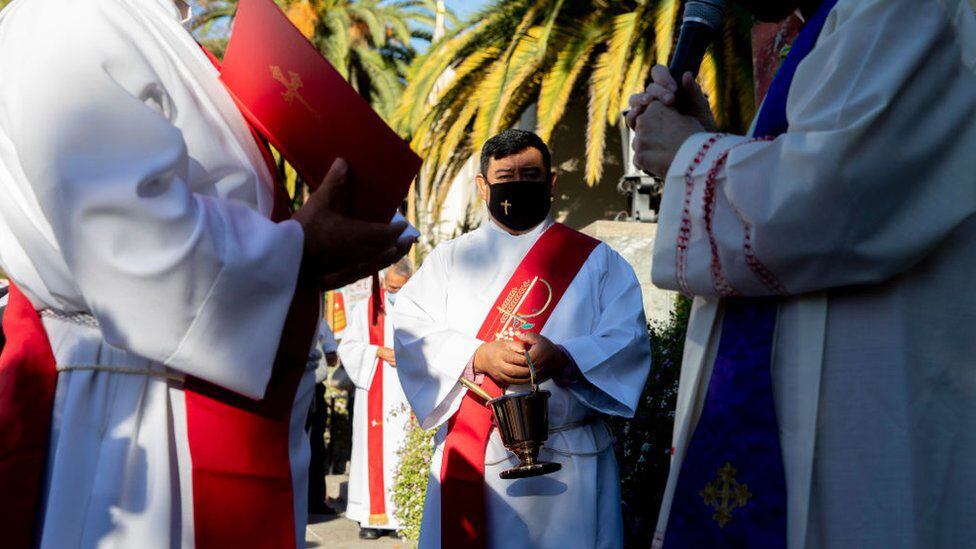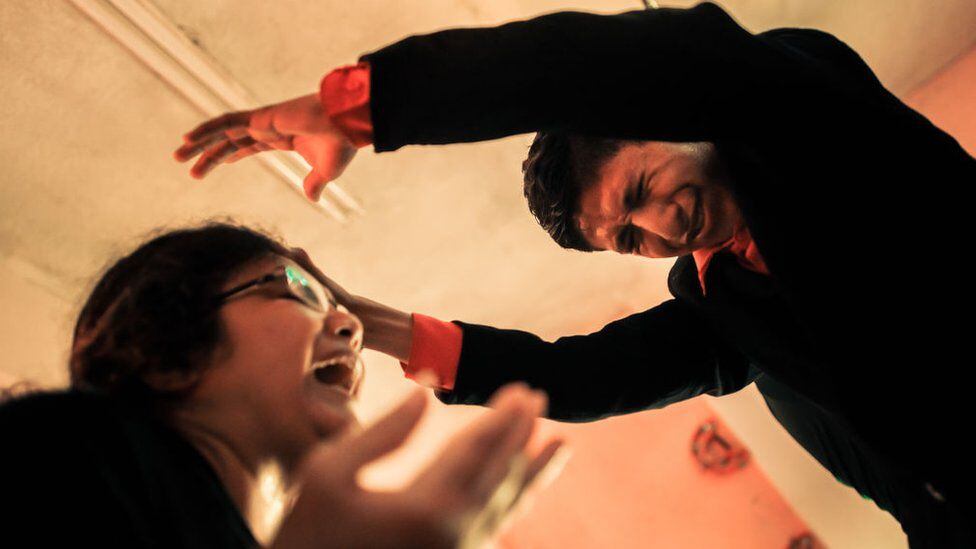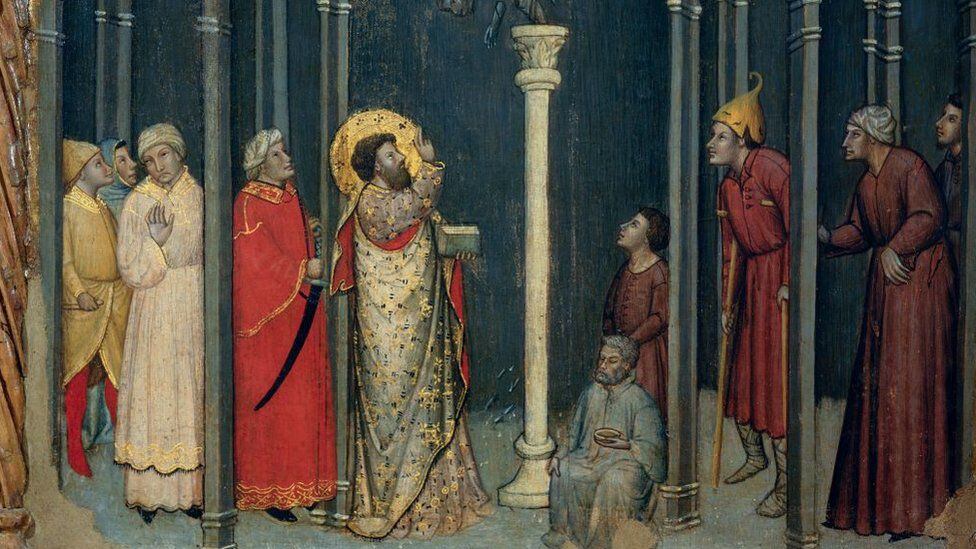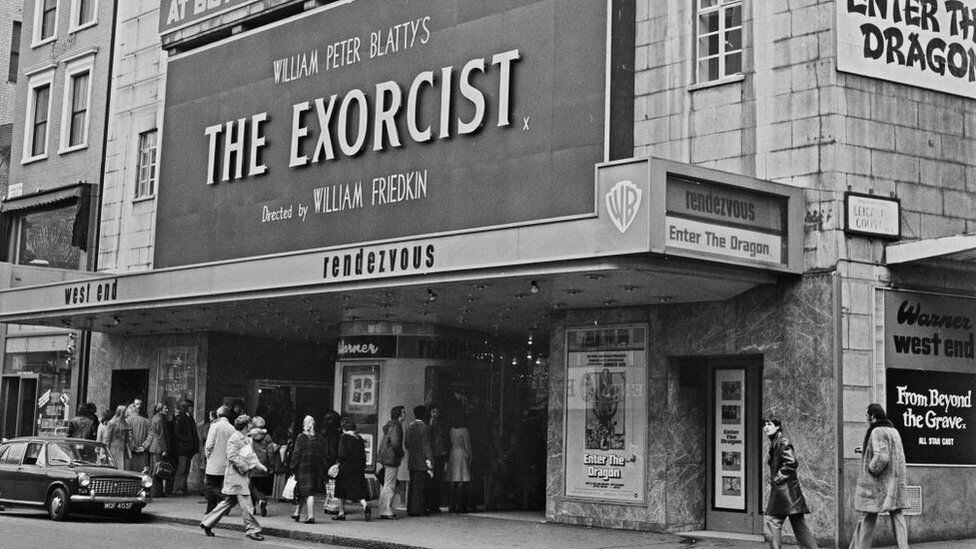In September 2021, a 3-year-old girl was killed during an exorcism at a small Pentecostal church in San Jose, California.
They allegedly squeezed her throat and held her head down during the ceremony, likely suffocating her.
Look: The fake Paris built to fool the German bombers of the First World War
In May 2022, three members of the victim’s family were charged with felony child abuse.
various famous deaths have occurred during exorcism rituals in the past.
In 1976, in Germany, the young Anneliese Michel died of dehydration and malnutrition after almost 10 months of catholic exorcisms.
In 2005, Maricica Irina Cornici, a Romanian Orthodox nun, died in an ambulance after an exorcism in which she was chained to a cross.
Although exorcism is practiced in most cultures around the world, in the Western imagination it is more associated with Catholicism.
That partnership has been a good thing or a bad thing for the church at various periods throughout history.
During most of the 20th century, exorcism was incredibly rare in western nations and often the Catholic authorities looked at him with shame.
After it came out William Friedkin’s film “The Exorcist” in 1973, Juan Cortez, a Jesuit priest and psychology professor at Georgetown University, told Newsweek that he didn’t believe demons exist.
Today, the Catholic Church has almost completely changed its attitude about exorcism.
In 1991, church authorities allowed an exorcism to be televised for the ABC show “20/20.”
Father Richard P. McBrien, who appeared on “Nightline” to question the wisdom of this decision, told The Catholic Courier that the exorcism was presented in this way to promote a political agenda, not to save souls.

“The real goal of that project, I maintain, was to help bring back that religion of old, when everyone, especially women, knew their place, when Catholics unquestioningly obeyed every directive from on high, and when they never there was no doubt that the catholic church was the only true church with all the answers to all the important questions we have about life, both here and hereafter.
As a scholar of religious studies who writes about exorcism from a historical perspective, I believe the church’s changing stance on exorcism has little to do with our culture’s understanding of mental illness or other scientific advances and more to do with the church’s conflicting views as described by McBrien.
Superstition and stigma
Historically, the Protestant majority in the United States stigmatized Catholics as “superstitious immigrants”.
After the Second Vatican Council, a world meeting of Catholic bishops held between 1962 and 1965, there was an effort to play down the more supernatural elements of the Catholic tradition.

Especially controversial were the traditions that dealt with what historian Robert Orsi calls “apparitions”or the belief that supernatural forces operate among us rather than in some transcendent realm.
Many Church authorities believed that if they did not “modernize” they would lose the younger generation.
As the Catholic novelist Flannery O’Connor described, the prevailing attitude in 1962 was that “The supernatural is a shame.”
interest in the occult
Ironically, as the Church attempted to modernize, the counterculture had a growing interest in the occultpopularizing books and movies that paved the way for “The Exorcist.”
The film became a social phenomenon and suddenly the priests were inundated with people demanding exorcisms.
William O’Malley, a Jesuit priest who was involved in the film, described this increase to sociologist Michael Cuneo as follows:
“I was teaching at a Jesuit high school in Rochester at the time, and for a time the phone did not stop ringing“.

“They called looking for an instant solution, begging me to expel their own demonsthe demons of their children, even the demons of their cats,” he said.
“Not that I rule out the possibility of demonic possession. As the saying goes, ‘There are more things in heaven and earth, Horatio, than you dream of in your philosophy.’ But this movie seems to have caused some really weird vibes.” “, he added.
Many conservative Catholics loved “The Exorcist.”
The traditionalists, the conservative Catholics who oppose the reforms of the Vatican II, capitalized on this new demand for exorcisms, stating that modernization had left Catholics vulnerable to demonic attack.
The Catholic Church had jurisdiction. Those who could not obtain an exorcism within Catholicism now had a variety of other options.
Pentecostals had been casting out demons for decades.
There were also New Age healers offering exorcisms.

return of the exorcists
The 1917 Code of Canon Law was the first comprehensive official codification of church law, and it mandated that each bishop appoint an official exorcist.
But most dioceses did not actually do this, and this requirement was removed when the code was updated in 1983.
The International Association of Exorcists was formed in 1990 to put pressure on the Vatican to take exorcism more seriously.
In 2004, the Vatican’s Congregation for the Doctrine of the Faith again asked dioceses around the world to appoint an exorcist.
These new exorcists had to be trained, so in 2005 it was offered a special course at the Vatican seminarythe Regina Apostolorum.
One of the priests who underwent that training was Father Gary Thomas, whose experiences were described by journalist Matt Baglio and became the basis for the 2011 film “The Rite.”

In the film, a priest with little faith is sent to Rome to learn exorcisms, culminating in a dramatic battle against the demon Baal.
In 2014, the International Association of Exorcists it eventually received a degree of formal recognition from the Vatican.
Pope Francis
Francis, who assumed the papacy in 2013, has been seen as a friend of exorcism.
In 2017, he encouraged priests to refer parishioners to an exorcist if they really thought it was necessary.
Paradoxically, Francis’ openness to exorcism may be related to his progressive agenda.
Francis is the first Jesuit pope. The Jesuit order, the same order Father Karras belongs to in “The Exorcist.” It emphasizes education, and the Jesuits have long had a reputation as free thinkers.
Right-wing conspiracy theories have accused the Jesuits of supporting communism or trying to corrupt the church from within.
As pope, Francis has made statements relatively tolerant about homosexuality and has criticized capitalism, which could alienate the conservative wing of the Church.
But traditionalists can at least take comfort in the fact that Francis is open to exorcism and the reality of the demonic.

Historically, exorcism has also been a way to attract new parishioners.
Some of the people who thought they were possessed after seeing “The Exorcist” became interested in Catholicism and began attending mass.
The year the movie came out, the media was talking about a Catholic exorcist in San Francisco who helped a family they believed to be under demonic attack.
As a result, a family member he converted from Orthodox Judaism to Catholicism.
Any chance of new converts is attractive to a church with a declining number of believers and still under the cloud of clerical abuse scandals.
exorcism and politics
Exorcism has become more common in Catholic culture, as well as in evangelical and Pentecostal culture.
A 2013 YouGov poll found that 51% of Americans They believe in demon possession.
But at the same time, attendance at the Catholic Church continues to fall.

This trend reflects a broader pattern of cultural polarization in the United States between growing secularism and a increasingly conservative religious culture.
Indeed, exorcism has played an increasingly prominent role in the culture war.
In 2018, a Chicago priest was removed from office by his bishop for saying a prayer of exorcism while set fire to a rainbow flag.
And in 2020, a San Francisco archbishop performed an exorcism at a site where protesters had vandalized a church statue of Junipero Serra, a Spanish missionary.
Serra was canonized as a saint in 2015, but was accused by Native Americans of aiding and inciting the Spanish genocide of indigenous peoples.
As these trends continue, time will tell how long figures like Pope Francis can occupy center stage.
Meanwhile, it is likely exorcism finds increasing appeal between Catholics and other religions.
*Joseph P. Laycock is Associate Professor of Religious Studies at Texas State University.
Source: Elcomercio
I, Ronald Payne, am a journalist and author who dedicated his life to telling the stories that need to be said. I have over 7 years of experience as a reporter and editor, covering everything from politics to business to crime.

:quality(75)/cloudfront-us-east-1.images.arcpublishing.com/elcomercio/GE2TAOJNGA3C2MBWKQYDAORRGU.jpg)

:quality(75)/cloudfront-us-east-1.images.arcpublishing.com/elcomercio/7KEYSJRQUBA2LIBLGCLVJ4T35M.jpg)

:quality(75)/cloudfront-us-east-1.images.arcpublishing.com/elcomercio/NKMUUVS7ZNDVZATFWMR3S333LI.jpg)

